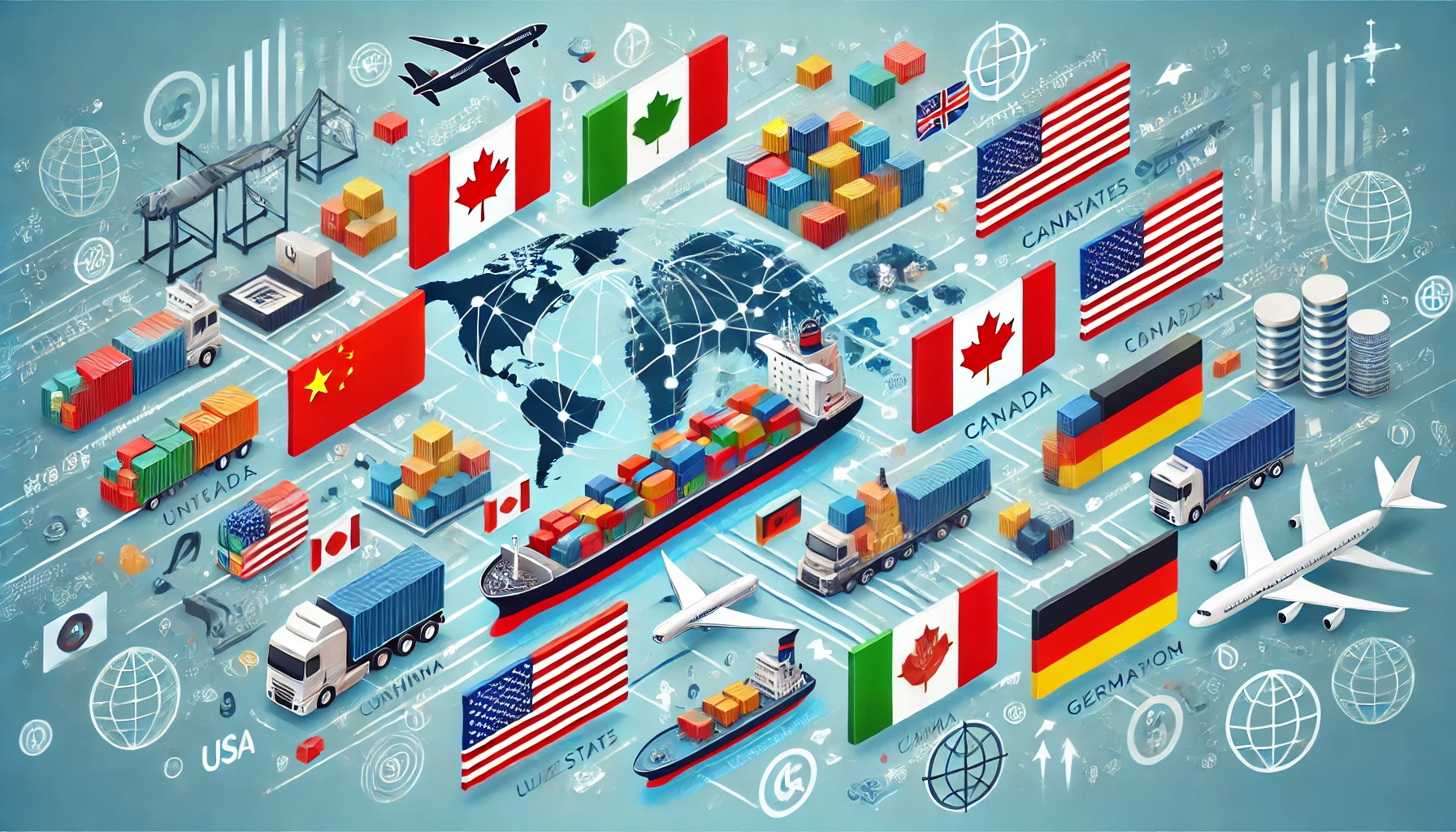By: David Romeo – February 4, 2025
The prospect of a new 25% U.S. tariff on imports has sent shockwaves through the e-commerce sector, highlighting the fragility of cross-border trade for businesses of all sizes. While Canada has been a major focal point due to its deep trade ties with the U.S., this issue extends far beyond North America. The increasing volatility in trade policies should serve as a wake-up call for all international sellers to reassess their cross-border strategies. Businesses that rely on a single market for sales, fulfillment, or logistics must take proactive measures to diversify operations and minimize future risks.
For U.S. sellers, this situation is just as critical. If retaliatory tariffs are introduced by Canada, the European Union, or other key trading partners, American exporters could face higher costs and reduced demand for their products in global markets. However, U.S. businesses that already have a strong cross-border presence can use these same methodologies—such as leveraging in-country fulfillment, Foreign Trade Zones (FTZ), and regional logistics partnerships—to further optimize their trade operations. These strategies not only reduce tariff exposure but also enhance efficiency, cut shipping costs, and improve customer satisfaction in international markets.
Key strategies such as working with multiple third-party logistics (3PL) providers, leveraging Foreign Trade Zones (FTZ), establishing regional fulfillment centers, and optimizing supply chain networks can help businesses protect themselves from sudden policy shifts. By adopting a resilient global strategy, sellers can reduce costs, improve shipping efficiencies, and ensure long-term success in an unpredictable trade environment.
Understanding the U.S.-Canada E-Commerce Trade Landscape
Canada and the U.S. share one of the largest trading relationships in the world. In 2022, trade between the two nations totaled over $850 billion, with e-commerce playing a growing role (Government of Canada, 2023). Many Canadian retailers depend on U.S. consumers, taking advantage of a historically favorable trade environment.
Under the United States-Mexico-Canada Agreement (USMCA), which replaced NAFTA in 2020, Canada benefited from key provisions that facilitated smoother cross-border transactions. Notably, the de minimis threshold—the value below which goods enter duty-free—was set at $800 for shipments into the U.S., making it easier for small Canadian sellers to reach American customers without excessive tariffs or paperwork.
However, Trump’s tariff policy changes could upend this advantage. If the tariff plan proceeds, even low-value shipments might become subject to duties and customs declarations, raising costs and complicating logistics. This shift highlights the need for a proactive, diversified international trade strategy beyond just the U.S.-Canada corridor.
Key Challenges for Cross-Border E-Commerce Businesses
- Higher Costs on Imports: The current $800 duty-free limit has been a lifeline for Canadian sellers, allowing for cost-effective cross-border shipping. If tariffs extend to these shipments, businesses will face higher expenses and reduced margins.
- Increased Compliance Burdens: A 25% tariff would likely result in stricter customs enforcement, leading to delays, additional paperwork, and new regulatory challenges that small businesses may struggle to navigate.
- Shifting Consumer Behavior: Higher costs may push consumers toward domestic alternatives, making it harder for international brands to compete on price. This shift could impact businesses that have relied heavily on foreign buyers.
- Reevaluating Supply Chains: To mitigate these challenges, companies may explore warehousing and fulfillment centers in key markets, but this requires significant investment and operational adjustments.
Mitigation Strategies for Cross-Border Sellers
Regardless of whether a business is based in the U.S., Canada, or another major market, the following strategies can help mitigate the impact of changing tariffs and trade policies:
- Expanding In-Country Fulfillment: Setting up distribution centers or working with 3PL providers in key international markets can reduce tariff exposure and provide faster shipping times to customers.
- Utilizing Foreign Trade Zones (FTZ): Storing inventory in FTZs can delay or reduce duties, offering more flexibility when selling internationally.
- Optimizing Supplier Networks: Diversifying manufacturing and fulfillment locations can help mitigate risks from regional trade disruptions.
- Adapting to Local Tax and Compliance Regulations: Businesses selling internationally must ensure compliance with VAT, import taxes, and local regulatory requirements.
- Leveraging In-Bond Warehouses: These warehouses allow businesses to defer duty payments until goods are sold, reducing the burden of upfront tariffs.
- Partnering with Regional Logistics Providers: Working with experienced local logistics providers can streamline customs processing and improve fulfillment efficiency.
Expanding Your Cross-Border Strategy Beyond the U.S.
E-commerce cross-border trade is growing globally, and businesses must ensure they are not over-reliant on one market. Diversification into regions such as Europe, the U.K., Australia, and the Middle East can mitigate risks associated with geopolitical trade shifts.
Best Markets for Expanding Your E-Commerce Strategy:
- European Union: The EU offers a single market where goods can be sold across 27 countries with streamlined logistics.
- United Kingdom: Post-Brexit, the U.K. operates independently, offering unique opportunities and challenges.
- Australia & New Zealand: Growing e-commerce markets with high consumer spending and strong logistics networks.
- Middle East (UAE & Saudi Arabia): Rapid e-commerce growth, favorable trade zones, and efficient logistics infrastructure.
What’s Next?
While the proposed tariffs are not yet in effect, businesses selling internationally should begin contingency planning. The global trade environment is shifting rapidly, and staying ahead of regulatory changes will be essential for long-term success.
What’s your take on these potential trade shifts? Are you rethinking your cross-border strategy? Drop your thoughts in the comments!
#Ecommerce #Trade #TrumpTariffs #CrossBorder #Retail #InternationalBusiness #GlobalExpansion #SupplyChain
References:
- Government of Canada. (2023). “Canada and the United States Trade Relationship.” Retrieved from https://www.international.gc.ca/trade-commerce/economist-economiste/statistics-statistiques.aspx?lang=eng
- Astute Analytica. (2024). “Global Cross-Border E-Commerce Market to Hit Revenue of USD 16,454.9 Billion by 2032.” Retrieved from https://www.globenewswire.com/news-release/2024/03/14/2846440/0/en/Global-Cross-Border-E-Commerce-Market-to-Hit-Revenue-of-USD-16-454-9-billion-by-2032-3-of-US-Canada-E-commerce-Revenue-is-International-Says-Astute-Analytica.html?utm_source=chatgpt.com


Leave a Reply